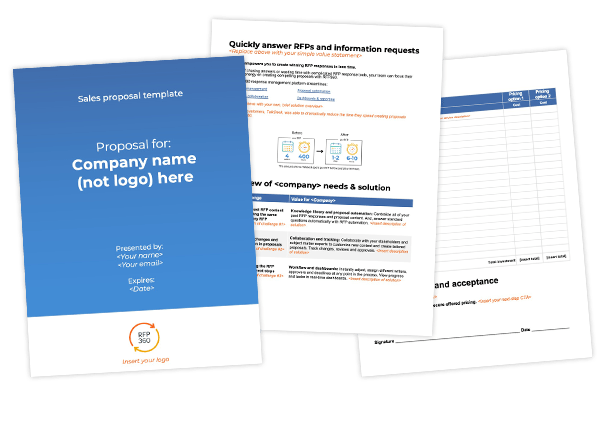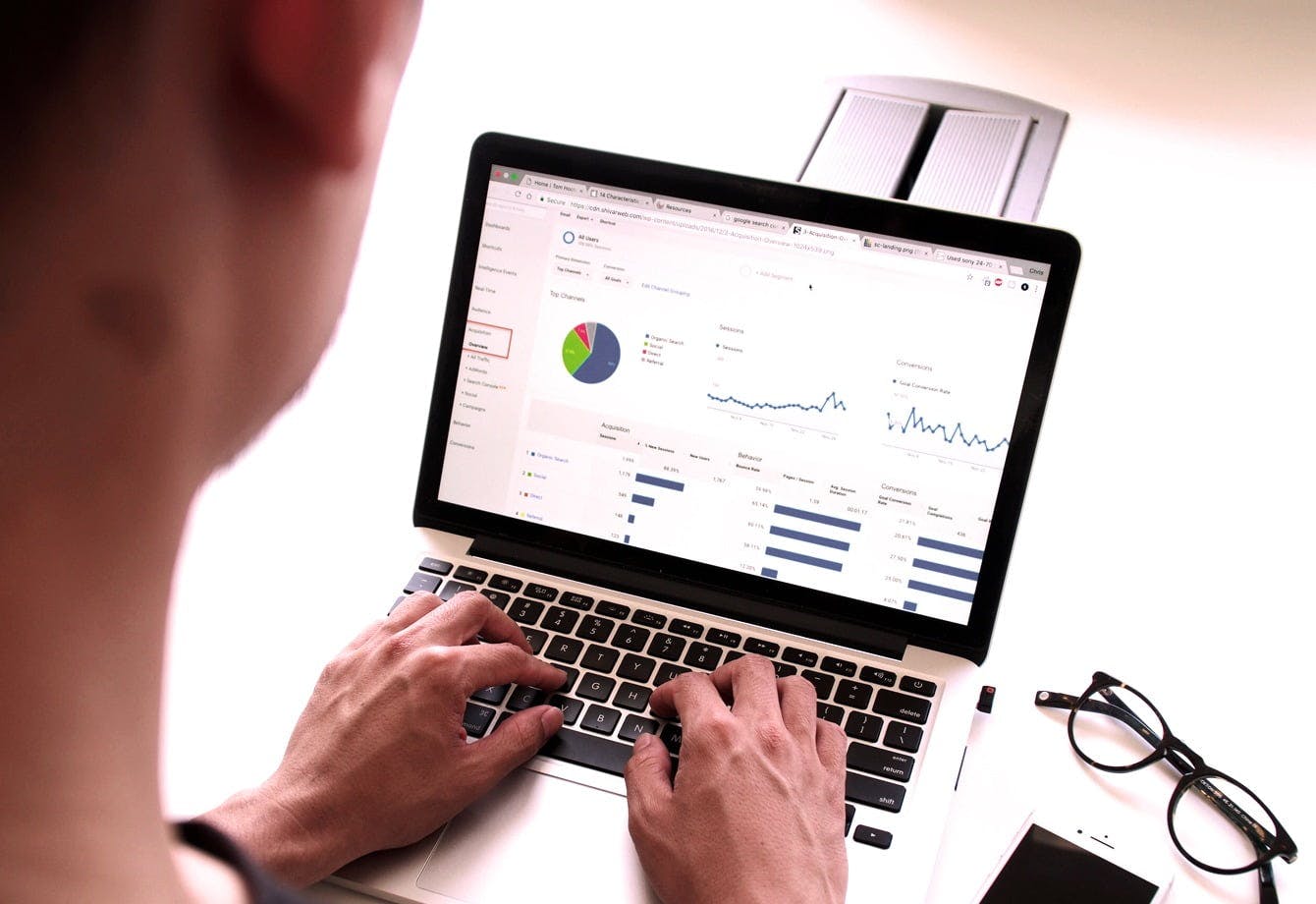When it comes to memorable sales proposals, they generally fall into one of three main categories — the good, the bad and the ugly. Truly, ask any buyer and they’ll be able to tell you stories. In fact, they can probably only recall the names of the companies that sent either the very best or worst proposals they’ve seen.
Certainly, in sales, being memorable matters. Unfortunately, many sales proposals don’t leave the lasting impression they should. In this blog, I’ll offer tips that make your proposal stand out for all the right reasons. In addition, I’ll offer key elements to include as well as a sales proposal template to help you get started.
Sales proposal basics
What is a sales proposal?
A sales proposal is a business document prepared by a supplier that offers goods or services to a potential buyer. Generally, the proposal provides solution details, benefits and pricing. It is a written pitch used to formalize a sales offer and move the sales cycle forward.
The goal of a sales proposal
Most of the initial sales process is spent gathering information, building a relationship and understanding the customer’s needs. Then, the sales proposal is where you bring it all together and make your argument for why you should win the business.
A sales proposal should:
- Demonstrate your knowledge of the customer’s needs
- Connect your proposed solution to the customer’s goals
- Offer a vision for how your business enables their future success
- Explore the customer’s potential return on investment (ROI)
- Provide pricing that is mutually beneficial
- Define the next steps in the sales process
To learn more about how to project ROI, download this ebook: Measuring the value of RFP software.
![Measuring the value of RFP software [ebook]](https://images.prismic.io/responsiveio/Z6EP-ZbqstJ9-LrL_Mockup-ROI_eBook-copy-e1612201063481.png?auto=format,compress)
Types of sales proposals
Reactive (solicited) sales proposals
A reactive proposal, also known as a formally solicited proposal, responds to a request for proposal (RFP). Often this type of sales proposal will follow a structure established by the RFP issuer. Typically, it will ask standard questions, enabling you to use your proposal content library and RFP software to automate the proposal process. In this situation, the buyer’s procurement team will generally be responsible for the RFP process.
On the other hand, you may also be asked unofficially for an informal proposal. While still considered a reactive proposal, it will not follow the same question-and-answer format as a response to an RFP. Your contact may request an informal proposal to enhance stakeholder buy-in or prepare a business case to win budget.
Proactive (unsolicited) sales proposals
A proactive proposal, also called an unsolicited proposal, offers a solution to a potential customer before they’ve asked for it. It’s risky to spend time creating proactive proposals. After all, the customer isn’t expecting the proposal, hasn’t planned for it and may well ignore it. However, if you provide an obvious solution to a current pain point, you may be able to close the deal without the competition even knowing about the opportunity.
Sales proposal components
To be effective, every sales proposal must contain five key elements. Each component provides key information to help your customer make their decision. Consequently, each should serve a purpose while being engaging and memorable.
Introduction
Pretty straightforward, right? Introduce your organization. The key to making this section memorable is to connect with the customer. What about your company makes you a good fit for this customer’s unique needs? Consider introducing key team members that the customer would work with. In addition, you could include a testimonial from an existing customer with a similar use case.
Remember, if the customer is using the proposal to secure buy-in from the organization, the introduction is your first impression. Who your business is, what you do and how the customer will benefit should be clear immediately in your introduction.
Overview
This section of the sales proposal is entirely focused on the customer. All of the conversations, emails and research you’ve done comes together in the overview. Consider: What problems, challenges and goals has the customer shared? Why does the customer need your solution? What are the consequences if the customer doesn’t move forward? Remember, be specific and speak their language.
Solution
Now, it’s time to be a hero. The solution section details how your product or service meets the needs discussed in the overview. Resist the temptation to simply list features and functionality. Instead, offer a picture of how their process will improve using your solution. Again, be as specific as possible. Help the customer envision success by stating how they will meet their goals by partnering with your business.
Pricing
It’s time to talk money. At this point, you know exactly what the customer needs. And, ideally, you know what they can afford. Bring it together in a clear pricing proposal. If possible, provide a list of the customer’s requirements. Certainly you don’t have to attach a price to each item, but reassure them that they’re getting everything they need.
Remember to include any setup, fees or additional costs they can expect. Finally, avoid providing too many pricing options or add-on features that you haven’t discussed with the customer previously. I’d recommend no more than three pricing models. Clarity will make you memorable. Don’t try to make your sales proposal do too much.
Closing
If your proposal has done its job, your customer now needs to know what comes next. Often, if the sales proposal has been solicited, the customer has a deadline they need to meet. Consequently, this allows you to create urgency in your offer. Share a timeline for implementation based on their needs.
In addition, include any required terms and conditions, resources for further research or links to reference materials in this section.
7 tips to make your sales proposal unforgettable (and effective)
1. Keep it short
It’s nearly universal advice, but still worth repeating. Be brief. Every word, illustration and example in your sales proposal should serve a specific purpose. Ask yourself: Does the customer need to know this information right now? Will it influence their ability to move forward in the buying process?
The sales proposal isn’t the place to explore every detail and facet of your business. Ideally, your proposal will be four to seven pages. If you’re having trouble cutting content, ask your proposal coordinator to help. Certainly, they have had a lot of practice and are pros at making sure every word has an impact. Remember, your customer’s attention is limited, use it wisely.

2. Prove your worth
Don’t make your prospect take your word for it, include a customer story, example or testimonial. Tell a (short) story of an existing customer that faced similar challenges. Then, share how you partnered with them to meet their goals. If possible, provide quantifiable results and conclude with a short quote from that customer. To boost your credibility even further, use a customer who has agreed to serve as a reference so the potential customer can hear their story directly.
3. Be a visionary
As the rise of strategic sourcing has proved, buyers don’t just want a transactional exchange, they want a long-term partner. In your introduction and solution sections, share a brief glimpse into the future. How will your business support and empower the customer’s growth? Explore how your company is uniquely positioned to help the customer scale up, evolve and stay ahead of the competition, not only now, but five years from now.
4. Review, correct, repeat
Once you’ve completed your sales proposal, review it. Then, when you’re done, ask someone else to review it as well (again, a proposal coordinator is a good choice). Finally, read it through one more time. If you find yourself scanning without reading, try changing the font to recapture your brain’s attention. It may seem like a lot of work, but if you’ve ever laughed at typo on a menu, you know how important it is. After all, there’s nothing worse than hitting send and finding an error.
Check your proposal for:
- Scannability — Use short sentences and paragraphs
- Grammatical errors, jargon and unexplained abbreviations
- Style inconsistency — Title case or sentence case, capitalization of products and so on
- Paragraphs that would be easier to read as bulleted lists
- Passive voice — Update to active voice as much as possible
5. Be on brand
Even at a glance, the customer should be able to recognize that your sales proposal belongs to your company. Embrace your brand’s colors, style and images. In addition, include professional, well-placed graphics that enhance your message. If your company has a graphic designer or marketing team, they are a great resource for ensuring brand consistency.
6. Include a call-to-action and deadline
The purpose of a sales proposal is to get the prospective customer to take the next step. Therefore, it’s important to include a call-to-action (CTA) that clearly states the next step. Typically, most sales proposals conclude with a line for signature agreeing to move forward to contract.
In addition to a CTA, creating urgency with a deadline motivates action. Not only that, but it also makes your proposal more memorable. I recommend including a date of expiration on the cover page as well as in your conclusion. Indeed, this can be particularly effective if you’re offering an incentive for meeting the stated deadline.
7. Create a constantly evolving template
Starting from scratch every time you need to send a sales proposal is inefficient. To solve this, create a template that combines all the best aspects of previous sales proposals. While this will offer a good start, it should never be sent out without customization.
If you have RFP software with a proposal content repository, you can create a sales proposal template by building sections of text. Then, you can tailor the proposal based on the needs of each customer, while still taking advantage of improved efficiency and proven content.
Sales proposal template
For inspiration, you can download this template. I created this sales proposal example with information about our own solution, but you can customize it to suit your needs. It has each of the five essential components. However, it combines the challenges overview and solutions sections into a single table. Formatted in this way, the customer sees exactly how each of their pain points is answered directly by a solution offered by your business.
Download the sales proposal template here.

According to research from the RAIN group, opportunities that make it to the sales proposal phase have a win rate of 47 percent. And yet, only 23 percent of salespeople reported proposal development as an area of focus in a recent study by CSO Insights. So, what does that mean for you? Imagine the impact your well-written, memorable proposal will have on your customer — especially if your competitors aren’t paying attention.

